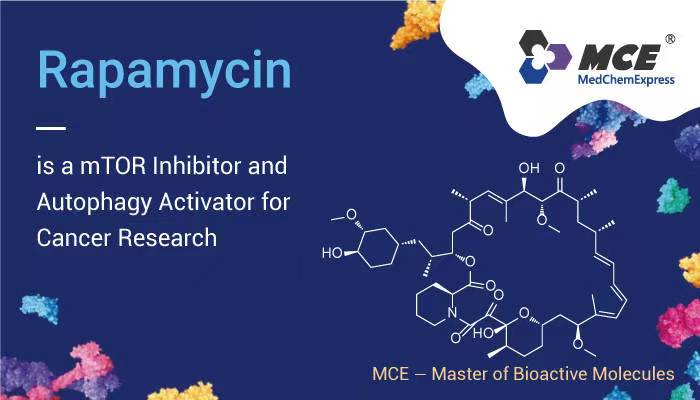mTOR is the target of Rapamycin. In the early 1990s, genetic screens in budding yeast identified the TOR1 and TOR2 genes as mediators of the toxic effects of Rapamycin on yeast. Shortly afterward, biochemical approaches in mammals led to the purification of mTOR and its discovery as the physical target of Rapamycin. mTOR is an atypical serine/threonine protein kinase that belongs to the phosphoinositide 3-kinase (PI3K)-related kinase family and interacts with several proteins to form two distinct complexes named mTORC1 and mTORC2.
mTORC1 responds to amino acids, stress, oxygen, energy, and growth factors and is acutely sensitive to Rapamycin. It promotes cell growth by inducing and inhibiting anabolic and catabolic processes, respectively, and also drives cell cycle progression. mTORC2 responds to growth factors and regulates cell survival and metabolism, as well as the cytoskeleton. mTORC2 is insensitive to acute Rapamycin treatment but chronic exposure to the drug can disrupt its structure. mTOR can regulate cell growth, cell proliferation, cell motility, cell survival, protein synthesis, and transcription. mTOR integrates the input from upstream pathways, including growth factors and amino acids. mTOR also senses cellular nutrients, oxygen, and energy levels. The mTOR pathway is dysregulated in human diseases, such as diabetes, obesity, depression, and certain cancers.
Rapamycin (Sirolimus) is a potent and specific mTOR inhibitor.

Rapamycin inhibits mTOR by associating it with its intracellular receptor FKBP12. The FKBP12-Rapamycin complex binds directly to the FKBP12-Rapamycin Binding (FRB) domain of mTOR, inhibiting its activity. Initially, we discovered Rapamycin as an antifungal metabolite produced by Streptomyces hygroscopicus. Subsequently, Rapamycin was found to possess immunosuppressive and anti-proliferative properties in mammalian cells. Therefore, it sparked an interest in identifying the mode of action of Rapamycin. What’s more, Rapamycin is an autophagy activator, an immunosuppressant.
References:
[1] Laplante M, et, al. Cell. 2012 Apr 13;149(2):274-93.
[2] Li J, et, al. Cell Metab. 2014 Mar 4;19(3):373-9.